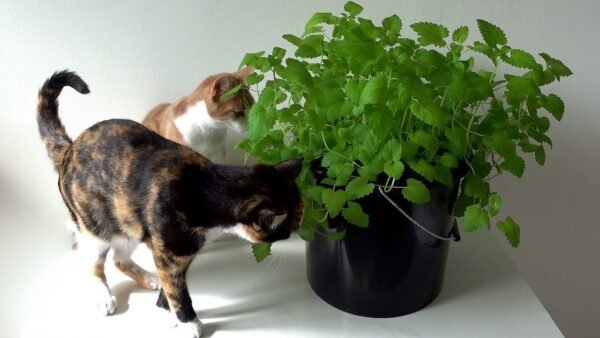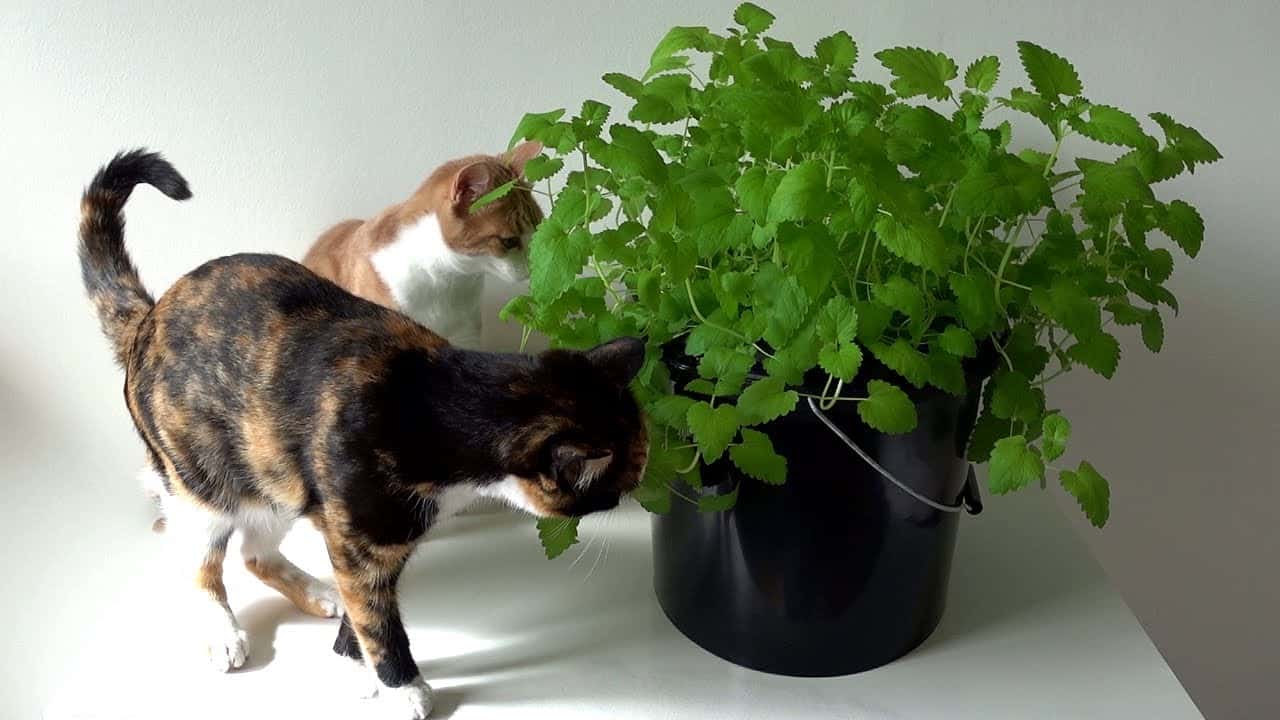How to take care of catnip indoors?
If you own a cat who likes catnip, you are aware of how lively and playful the herb can make them.
Catnip is thought to affect between 50 and 75 percent of cats. “Nepetalactone” is an oil found in the catnip plant’s leaves and stems. Nepetalactone stimulates specialized receptors in cats that detect substances known as “pheromones” when they smell them.
The outcome is a sort of chemical response that makes the cat feel euphoric or extraordinarily happy. The impact on people has been likened to that of a psychedelic drug.
Cats frequently paw at, rub against, roll over, lick, and even chew on catnip when they smell it. Cats with significant reactions to catnip may also act crazy for many minutes, meowing, growling, purring, drooling, and more!

But how do you take care of catnip indoors without having it go to waste? This blog post discusses the safest practices for handling and storing catnip inside.
This guide also includes information on the potential consequences of catnip overdose and how to tell if your cat has done so.
Read on for helpful ideas whether you’re a cat lover who wants to make sure their feline friend has enough catnip or an occasional catnip abuser. However, before we continue, you can read this article: How to Prune Catnip Plant? 3 Best Ways to Do It.
How to Take Care of Catnip Indoors
Catnip has a certain effect that causes them to behave erratically. Catnip just has a magic all of its own, whether it’s the feline riot that breaks out when the plant begins to flower or the way the plant’s leaves make a calming chuckle.
Catnip is packed with essential oils that relax and quiet cats, so it’s easy to see why. Catnip thrives in containers as well. By using a planting area with a boundary, such as a pot, raised garden bed, or stone wall, catnip can truly be contained.
Catnip is the ideal indoor plant if you have a cat who enjoys playing and unwinding. Here are some pointers for maintaining catnip indoors:
- When the plant blooms, remove the flower’s top and let the nip leaves wilt before properly discarding them. (Burial or composting)
- Catnip should be sown in a pot with some damp soil in a sunny, well-drained area. Wait until spring to let the plant bloom, and give it regular waterings. Keep the soil moist but not waterlogged; avoiding watering in direct sunshine will prevent leaves from turning yellow and falling off.
How to Store and Handle Catnip
When your cat starts to move about and scratch the door, isn’t that exciting?
If you’re a cat owner like many others, you might be unsure of how to use the herb.
To ensure that you can benefit from catnip’s pleasant effects for as long as possible, we will tell you how to manage and store it.
To prevent running out of catnip, it is important to use it cautiously. Wait till your cat is peacefully seated before distributing the herb to them.
Don’t give your cat too much at once because they can become overwhelmed and ruin your furniture or toys! Catnip should be kept in a tightly closed container in a cool, dark location.
Catnip Overdose and Adverse Effects
Are you and your kitty friend having the time of your lives? They might have consumed too much catnip if they’re continually leaping on you and chasing their tails.
If so, go quickly and contact a poison control center or your veterinarian immediately away! To prevent accidental consumption, keep any catnip-containing products out of your cat’s reach.
Catnip can harm cats in addition to the ways already described, including excessive scratching, hyperactivity, and convulsions. So, for a step-by-step explanation of how to care for catnip inside, continue reading.
Why is Catnip Such a Popular Plant to Keep Inside?
According to Essential Oils in Food Preservation, Flavor and Safety, 2016, Nepeta cataria flowering tops and leaves are used as antispasmodic, antitussive, astringent, carminative, diaphoretic, semmengogue, refrigerant, sedative, stimulant, stomachic, and tonic (Adiguzel et al., 2009).
The essential oil nepetalactone, a terpene having two isoprene units and a total of 10 carbons, is the active component of catnip (Nepeta cataria). About 50% to 75% of cats exhibit an apparent euphoric or hallucinatory response to catnip or catmint, and responsiveness is said to be an autosomal dominant feature that appears around 8 weeks of age.
The stimulant qualities of catnip contribute to its popularity as an indoor plant because they help keep cats entertained and active.
Additionally, catnip aids in lowering cats’ stress levels and anxiety. Additionally, it’s wonderful for giving your home a pleasant smell, which can entice other dogs inside.
What are Some Tips for Safely Taking Care of Catnip Indoors?
When it comes to taking care of catnip indoors, some tips include:
- Adding new leaves every two weeks: You may keep the herb plant healthy and vigorous by regularly adding new leaves to the plant.
- Spraying water on the plant once or twice a week will help to keep it hydrated and wet while also preventing mildew.
- Making a tincture with alcohol (70% for cats, 25% for humans): You can make a tincture for yourself or your cat by combining equal parts alcohol and catnip.
Conclusion
We hope you enjoyed this guide on how to take care of catnip indoors!
You won’t need to go outside to keep your cat happy and occupied if you follow the advice in this post.
Remember to read the comments below for more advice from other cat owners, in addition to the ideas listed above. Gratitude for reading!

